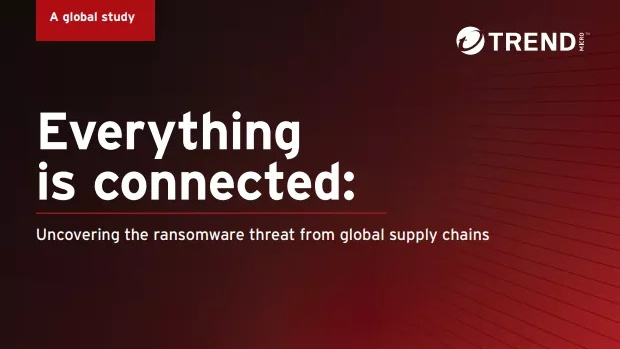Iranians the target of DigiNotar hack?
A growing pile of evidence suggests Iranian web users were being spied on as a result of the DigiNotar attack.


Iranian web users were the real target of the hack on Dutch certification authority (CA) DigiNotar, which resulted in over 500 fake certificates being issued, evidence has suggested.
The CA was hacked in July, leading hackers to produce a host of fraudulent SSL certificates for sites including Google.com and an MI6 website.
Trend Micro said it had "concrete evidence" suggesting the DigiNotar attack was used to spy on Iranian internet users "on a large scale."
"We found that Internet users in more than 40 different networks of ISPs and universities in Iran were met with rogue SSL certificates issued by DigiNotar," a blog post from Trend read.
"Even worse, we found evidence that some Iranians who used software designed to circumvent traffic censorship and snooping were not protected against the massive man-in-the-middle attack."
What we think...
The use of attacks at both the CA and DNS levels shows the hackers were determined, or perhaps ISPs themselves were involved.
The involvement of an ISP was suggested by an Iranian web user the same one who discovered the fake Gmail certificate that kicked off this unsavoury saga in the first place. For Iranian citizens, the situation will only fuel their fury against the Government more.
Get the ITPro daily newsletter
Sign up today and you will receive a free copy of our Future Focus 2025 report - the leading guidance on AI, cybersecurity and other IT challenges as per 700+ senior executives
Tom Brewster, Senior Staff Writer
Trend noted a spike in the number of Iranian users who loaded the SSL certificate verification URL of DigiNotar. As DigiNotar is a Dutch authority, most of its traffic normally comes from Dutch end users, so it is odd to see any noticeable Iranian traffic coming through.
"These aggregated statistics from the Trend Micro Smart Protection Network clearly shows that Iranian internet users were exposed to a large-scale man-in-the-middle attack wherein SSL-encrypted traffic can be decrypted by a third party," Trend Micro added.
"Because of this, a third party was probably able to read all of the email messages an Iranian internet user sent with his/her Gmail account."
The security firm even found evidence suggesting Iranians using anti-censorship software could still have had their internet usage watched over.
"Closer analysis of our data revealed even more alarming facts like outgoing proxy nodes in the US of anti-censorship software made in California were sending Web rating requests for validation.diginotar.nl to the cloud servers of Trend Micro," the company added.
"This very likely means that Iranian citizens who were using this anti-censorship software were victimized by the same man-in-the-middle attack."
Meanwhile, Fox-IT, the security auditors brought in to investigate the DigiNotar hack, found that in the lookups on DigiNotar's OCSP servers, which browsers check to see if a certificate has been revoked, more than 99 per cent of queries originated from Iran during the "active attack period."
Fox-IT found almost 300,000 unique IP addresses from Iran attempted to gain access to Google services using rogue certificates from DigiNotar.
"This is the most solid evidence yet that these certificates may have been used by the Iranian government or ISPs to spy on private communications of Iranian internet users," said Chester Wisniewski, Sophos senior security advisor, in a blog post.
"Many of the other requests not originating from Iran appear to have originated via Tor exit nodes or other proxies used by Iranians to avoid censorship. This indicates that the method used to perform the man-in-the-middle attacks with these certificates likely depended on DNS poisoning at the ISPs."
Tom Brewster is currently an associate editor at Forbes and an award-winning journalist who covers cyber security, surveillance, and privacy. Starting his career at ITPro as a staff writer and working up to a senior staff writer role, Tom has been covering the tech industry for more than ten years and is considered one of the leading journalists in his specialism.
He is a proud alum of the University of Sheffield where he secured an undergraduate degree in English Literature before undertaking a certification from General Assembly in web development.
-
 Cleo attack victim list grows as Hertz confirms customer data stolen
Cleo attack victim list grows as Hertz confirms customer data stolenNews Hertz has confirmed it suffered a data breach as a result of the Cleo zero-day vulnerability in late 2024, with the car rental giant warning that customer data was stolen.
By Ross Kelly
-
 Lateral moves in tech: Why leaders should support employee mobility
Lateral moves in tech: Why leaders should support employee mobilityIn-depth Encouraging staff to switch roles can have long-term benefits for skills in the tech sector
By Keri Allan
-
 Exploitation of Docker remote API servers has reached a “critical level”
Exploitation of Docker remote API servers has reached a “critical level”News Hackers are targeting Docker’s remote access API as it allows them to pivot from a single container to the host and deploy malware with ease
By Solomon Klappholz
-
 Cyber criminal underground “thriving” as weekly attacks surge by 75% in Q3 2024
Cyber criminal underground “thriving” as weekly attacks surge by 75% in Q3 2024Cyber attacks reached another all-time high this quarter as digital crime continues to be a highly profitable industry for threat actors
By Solomon Klappholz
-
 Alarm raised over patched Phemedrone Stealer malware that's being used to target Windows PCs - here's what you need to know
Alarm raised over patched Phemedrone Stealer malware that's being used to target Windows PCs - here's what you need to knowNews Phemedrone Stealer is being used to exploit a vulnerability in Windows Defender SmartScreen despite the issue being patched in November 2023
By Solomon Klappholz
-
 SOC modernization and the role of XDR
SOC modernization and the role of XDRWhitepaper Automate security processes to deliver efficiencies across IT
By ITPro
-
 Uncovering the ransomware threat from global supply chains
Uncovering the ransomware threat from global supply chainsWhitepaper Effectively mitigate ransomware risk
By ITPro
-
 The near and far future of ransomware business models
The near and far future of ransomware business modelsWhitepaper Discover how criminals use ransomware as a cyberweapon
By ITPro
-
 Trend Micro security predictions for 2023
Trend Micro security predictions for 2023Whitepaper Prioritise cyber security strategies on capabilities rather than costs
By ITPro
-
 'Potentially unsecured' SMBs are propping up an IT supply chain riddled with ransomware
'Potentially unsecured' SMBs are propping up an IT supply chain riddled with ransomwareNews More than half of IT supply chains have been impacted by ransomware attacks in recent years and organisations are failing to implement the necessary steps to prevent future damage
By Connor Jones